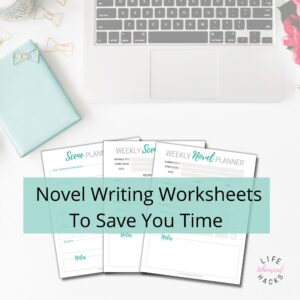
The Query Letter
If you want to publish your book traditionally, that is through a publisher instead of self-publishing it, you’ll need to become very familiar with the query letter.
Query letters may seem scary, but once you understand the purpose and format of effective query letters, you’ll be able to write them confidently.
I’ve written query letters that resulted in manuscript requests using the following format.
Purpose
The purpose of a query letter is to ask a prospective editor or agent if she might be interested in reading your work. The query letter needs to pique the interest of the editor/agent so that she will be motivated to ask for more information.
Top of the Letter
At the top of your letter list your name, address, phone number, email address, and website. Make sure you give the editor/agent your current contact information and make it easy for her to contact you if she’s interested. Don’t use any fancy fonts because you don’t want the font to distract from your query.
Under that, include the name and address of the editor/agent you want to contact. It’s imperative to use the correct name of the editor or agent. This may include research to find out exactly who accepts query letters for your type of project at that publishing house or agency. Different editors/agents accept different genres. Addressing your letter to a non-specific person will more than likely hinder your efforts. Be sure to spell the name properly.
Include the date and then a salutation (again, make sure it is directed to a specific person).
First Paragraph: Hook
Begin the body of the query with a hook. You’re attempting to entice an editor or agent. Make every word count. Don’t over-hype your work, but pull out the most interesting aspects to include in the hook. Generally, the hook should be a paragraph. Make that editor/agent want to call you and insist that you send her your manuscript at once. Work on your hook until it successfully communicates the gist of your story in the most appealing way possible.
Second Paragraph
Let the editor/agent know the specifics. Include the title, word count, target audience, whether it is a series, and if it is complete. Generally, fiction manuscripts should be complete before you send the query letter.
Third Paragraph
You can then add any of your writing credits or accomplishments that are most closely related to what you are offering the editor or agent. If you have not yet had any publications, don’t worry. Skip this part of the query letter. Don’t draw attention to your lack of publishing credits.
You can also include membership in professional organizations like SCBWI (Society of Children’s Book Writers and Illustrators).
Last Paragraph
Ask the editor or agent if she would be interested in reading the entire manuscript and then close the letter with an appropriate thank you and your name.
Don’t Forget
If the publisher’s guidelines mention sending an SASE (self-addressed stamped envelope) be sure to include that with your query.
Print your query letter on white paper with black ink. Keep it to one page. A query is not the time to share the entire story. Keep it simple and make every effort to entice the editor.
Electronic Submissions
Many publishers and agents now accept electronic submissions. Be sure to check the website and follow it exactly, Remember, editors and agents receive hundreds, if not thousands, of submissions, so make sure your submission is what they want. Following these suggestions may help you avoid the dreaded rejection letter.
Don’t let writing a query letter scare you. Follow this process and you will have a great chance of hearing, “I’d like to request your manuscript,” from an agent or editor.
***Do you need some help organizing your novel or your time? I offer writing templates and printables designed to help you simplify your writing process. You can visit my Etsy Shop here.

***If you need some help creating your characters, download my free Character Design Packet here. It will help you create compelling, unforgettable characters that will make your story come alive.

***Need help writing your first chapter? Check out my course: Writing a Fantastic First Chapter.
In this course, Writing a Fantastic First Chapter, you will learn what components you need to include in your first chapter to hook readers. With examples and assignments, you will put into practice what you learn and you can ask questions all along the way. A first chapter checklist, a character sheet, and a character interview are all included as downloads.
Don’t try to write a first chapter in the dark. This course will shine the light on what elements you need to help you navigate writing the all-important first chapter, so you can win over readers.
***Do you already have a manuscript? If you can’t afford an editor, you might be interested in Pro Writing Aid Writing Software. This writing software helps you improve your writing to be the best it can be. It’s like having your own private editor for a fraction of the price. You can try it for free for 2 weeks. You can click here to learn more about it.
***This post may contain affiliate links which may compensate me with no additional cost to you.





